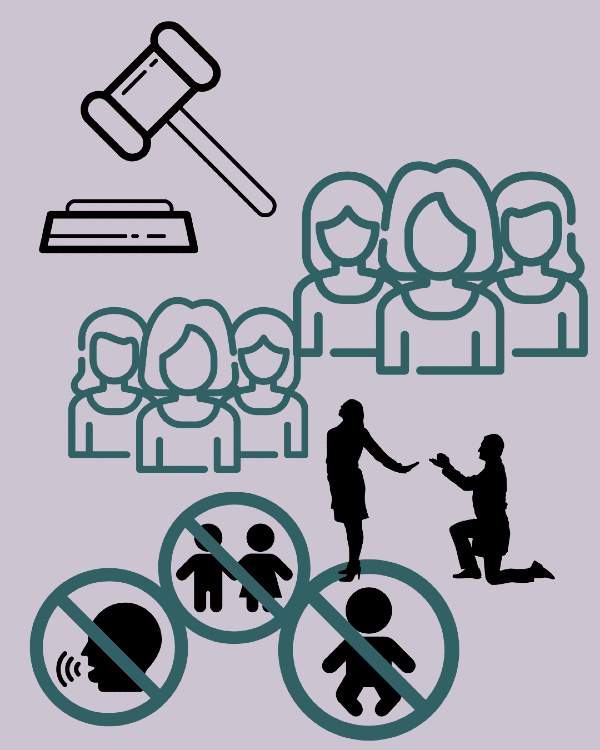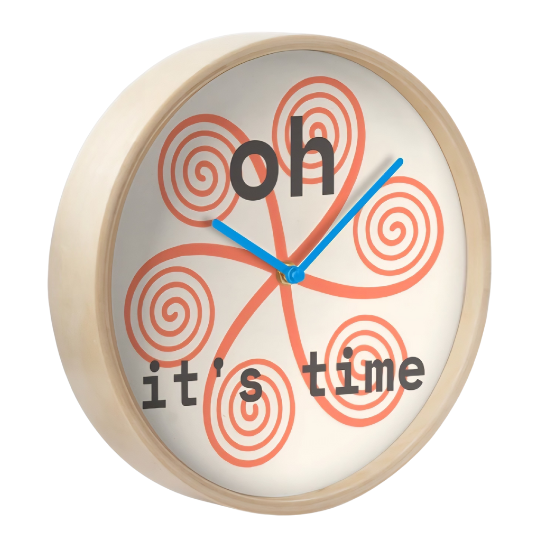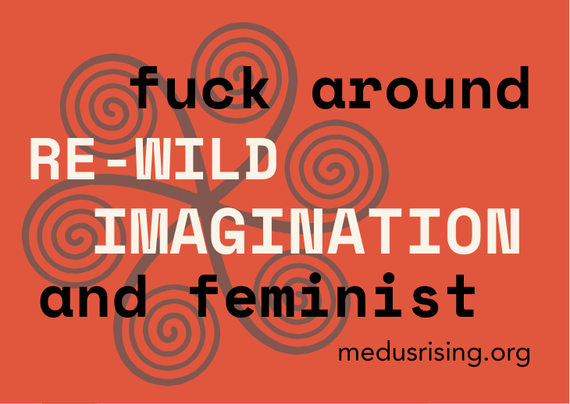Andrea Dworkin's Enduring Insights on Sexual Assault, and some feminist reservations | by Jocelyn Crawley
**This essay includes descriptions of sexual assault and rape.**

Starting at $2 USD per month | Access to complete posts, Gorgon Posse videos, Commenting & conversation, External reading recommendations, & Special Event invitations.
(. ❛ ᴗ ❛.) Or, just leave us a tip. (. ❛ ᴗ ❛.)
We do love to pay these writers, reporters, artists.
We pay contributors, and we want to pay the team, and we want to foster a feminist economy. Pitch in as you can.
I became a radical feminist while completing my Master's degree in English, reading widely and diversely on sexual assault. It was then that I was exposed to Andrea Dworkin's work, transforming me from someone vaguely identifying with feminist points to an avid, unequivocally radical feminist thinker." Unlike many mainstream writers who express antagonism towards patriarchy, Dworkin's work prioritizes rape and other forms of sexual degradation as integral to perpetuating male supremacy. This is why feminists should pay attention to the work she has produced.
But before I launch into aspects of her work that I have found either deeply riveting or profoundly problematic, I want to provide a general background of her life and work. Born in 1946, Dworkin was a radical feminist activist and writer who was well known for her analysis, critiques, and repudiation of pornography and sexual assault. Some of her most notable texts include Woman-Hating and Intercourse. Dworkin collaborated with Catharine MacKinnon on multiple literary and legal projects, which centered on addressing pornography as a violation of civil rights.
During my early evolution into a radical feminist, I strove to read extensively about sexual assault. Dworkin’s work played a key role in enabling me to understand the profoundly deleterious impact that forms of sexual assault such as rape has on victim-survivors. In her important essay, “The Third Rape: 1st-The Act Itself. 2nd-The Trial. 3rd-The Media. One Victim’s Graphic Story,” Dworkin moves beyond prototypical conceptualizations of rape as: 1) nonexistent, 2) 'rough sex' or 'bad sex,' or 3) existent but not that bad. Rather than purporting these mainstream/malestream responses to rape, Dworkin offers a brief yet cogent analysis of the deleterious harms that result from sexual assault. In this piece, Dworkin identifies three types of rape transpiring in contexts in which sexual assault happens. The first is rape itself, and Dworkin references several horrific experiences with sexual assault to convey the depth of dehumanization and dissonance it engenders. As Dworkin notes, she was raped at the age of nine and her parents “didn’t report it.” Her second experience with rape transpired a month before she was placed in jail. This sexual assault was an acquaintance rape. Discussing the attack, Dworkin notes:
'Yes, I fought; yes, he beat me; yes, he hurt me, and no, I never told anyone. Yes, there was blood; yes, there were bruises; but the unspeakable physical pain was between the legs—the rape part. Women are human down there, too.'
The horrors of rape Dworkin articulates here are compounded by her revelation that that “No one called it ‘rape.’”
Beyond articulating that rape is an egregiously deleterious harm, Dworkin discusses the metaphorical forms of sexual assault that result from literal rapes. She refers to these as the second and third rapes. The second rape results in that rare event: a case going to trial. Dworkin discusses the negative import of rape trials:
For those that go to trial, annihilating the victim–through insult, innuendo, intimidation, forced repetition of every detail, the pressure of continuing public humiliation before family, friends, co-workers–is still the rapist’s best chance for acquittal; and acquittal is the usual outcome.” Feminists call the trial “the second rape.
Coined by Lee Madigan and Nancy C. Gamble in their important book The Second Rape: Society’s Continued Betrayal of the Victim, the term refers to the horrors victims face from the criminal-justice system which should be operating to rectify the wrongs done them. In her interpretation, Dworkin draws attention to the rhetorical violence victims are subjected to–insults that degrade, innuendos that dehumanize, and intimidations that demean. These acts of rhetorical violence reinforce the victim’s sense of being reduced to identity lessness which transpired during the first rape. The second rape, then, might also be thought of as a rhetorical sexual assault that parallels the physical assault that preceded it.
Just as Dworkin’s essay provides readers with a perspicuous understanding of the first and second rape, she offers individuals lucid depictions of the third rape. This rape transpires when the media facilitates societal examination of the sexual assault by conveying its existence to the public. Dworkin writes that:
Now, thanks to the New York Times and NBC News, there will be a third rape–by the media. If a woman’s reporting a rape to the police means she will be exposed by the media to the scrutiny of voyeurs and worse, a sexual spectacle with her legs splayed open in the public mind, reporting itself will be tantamount to suicide.
Here, Dworkin conveys how the original rape goes on and on as the sexual violence done to her is put on display to the public. The concept of this display, conveyed in the image of 'splayed legs,' further emphasizes the ugly import rape has in the victim's mental life and its likely speculative import in the public mind. To the victim, having one’s sexual assault made public is viscerally akin to the humiliating forced on her by rapist’s speculative, perverse pleasure. Now, following this unwanted exposure, the victim must face public scrutiny in a new scenario which replicates the essence of the old one through the repetition of the element of vulnerability to invasion.
When viewed as a composite whole, the first, second, and third rape are a metaphorical gang rape in which the rapist, court officials, and media take their turns violating and invading the victim with their presence and perverse power. Although many might argue that the first rape is the most deleterious and damaging, it is still important to acknowledge the adverse impact that the other forms can have. For example, the second rape can involve a sequence of events which includes the victim attempting to prove her case in a court of law only to find that the rapist is set free with a dismissive "not guilty" verdict or an extremely short sentence, such as the one that Brock Turner received. I was listening to a woman discuss the lenient or non-existent sentencing that transpires in patriarchal court systems and she noted that these pseudo-sentences are not even a slap on the wrist. Maybe they're actually a pat on the back or an amicable alpha-like punch to the shoulder meant to convey the "attaboy" attitude which many men adopt towards rape such that male aggression becomes an inevitable and appropriate modality through which to express one's social entitlement to sexually assault women.
There is only one thing about Andrea Dworkin's life and work that I ever found problematic. This transpires in context of her amazing essay "I Want A 24-Hour Truce In Which There Is No Rape." I do not agree with asking males for assistance in the process of addressing and resolving the issue of sexualized male violence. By asking for this gesture, she tells men who assert sympathy with feminist rhetoric against pornography to stop simply telling women like herself their sentiments and ideological inclinations. Rather, Dworkin states that they should:
Tell the pornographers. Tell the pimps. Tell the warmakers. Tell the rape apologists and the rape celebrationists and the pro-rape ideologues. Tell the novelists who think that rape is wonderful. Tell Larry Flynt. Tell Hugh Hefner. There’s no point in telling me. I’m only a woman. There’s nothing I can do about it. These men presume to speak for you. They are in the public arena saying that they represent you. If they don’t, then you had better let them know.
The problem with this approach is that it puts power back in the hands of the oppressor and essentially amounts to acquiescing the master (men) and working with them (males). Whether men who claim to have these anti-pornographic sentiments actually do so is highly questionable, and Dworkin addresses this doubt, asking men:
You don’t like pornography? I wish I could believe it’s true. I will believe it when I see you on the streets. I will believe it when I see an organized political opposition. I will believe it when pimps go out of business because there are no more male consumers.
In asking this (ostensibly rhetorical) question, Dworkin affirms what many female activists have already asserted about the issue of men attempting to join ranks with female activists: it doesn’t make sense because the same men who express interest in fighting with and for women are waging their own hidden wars with the patriarchal weapons that work against us. If we know that we cannot dismantle the master's house by using his tools, why would we continue to appeal to and center men–many of whom are active consumers of pornography–during the process of radical feminist strategizing against rape? It is men who are using their tools (pornography) to harm women, and this process of tactically consuming images that promote the proliferation of rape (which is what pornography does) reveals that men–as a class, not necessarily as individuals–have collectively consented to the degradation and dehumanization of women as acceptable, appropriate ways for existence to unfold in the material world.
Throughout our lives in the patriarchal world, women learn that the men they attempt to work with on egalitarian, humanitarian, or otherwise progressive political projects turn their backs on us when issues of sexism arise. Dworkin’s essay on the three rapes demonstrates this abandonment when she explains that, after being subjected to a violent vaginal examination within a detention center, the men that she had worked with on anti-war projects turned against her. Specifically, Dworkin notes that:
I couldn’t talk, I couldn’t stop bleeding, I didn’t know what they had done to me. The men I worked with against the war laughed at me–a girl struck dumb. But they knew someone had stuck something up me and they figured I deserved it.
This is not anecdotal evidence. For centuries, women have found that the men they attempt to work with and love reveal themselves to be indifferent to female suffering. This is why Dworkin’s assertion in the 24-hour essay is not an effective solution to the ongoing war against women that is rape. Rather, it is a pseudo-solution whose efficacy is perhaps limited to its rhetorical effect of drawing attention to the fact rape is a significant enough problem to warrant using the language of war (“truce”) and appealing to a class of people (men) that are notorious for being violent and unwilling to acknowledge the humanity of women.
If the reader agrees that Dworkin’s suggestion that women ask men to work on other men to consider female humanity a real thing is an ineffective approach to resolving sexual violence, it is time to talk about tenable solutions. There are several.
One is separatism.
Separatism is both an ideological perspective and material reality which the majority of women will apparently not assent to. In the separatist framework, safety looks like living in an all-female commune, and even this realm is not entirely safe because it is vulnerable to male invasion. The practicality or logic of separatism is simply that it makes one safer and enables living with like-minded people, thereby improving quality of life through celebration of and participation in shared interests. I had a lesbian friend many years ago who pointed out that none of her friends are heterosexual simply because they want to spend a great deal of their social life talking about their men. This was boring to her as a lesbian and a feminist, and this is the practicality of developing lesbian and/or radical feminist spaces in which men are not the center. So separatism actually does work. In fact, I was talking with a lesbian feminist many weeks ago on Facebook and there is a whole listing of women-only communes where female people are happily sharing space with one another and away from men by choice. She went to one of these communes recently and said she had a fabulous time.
These separatist communes don't work for women who don't want them to, meaning that if you have decided that you have to have male attention and derive some sort of pleasure or value from it, you would not want to be in this type of all-female and frequently all-lesbian space. That is a conscious, volitional choice. Another way a separatist commune would not work would be if you had an ideological, spatial, or relational disagreement with one or more of the women there, in which case I guess you could be "kicked out." So this is how these communes either work or don't for women. The argument regarding not having enough money to live sustainably this way is problematic because, as I learned when I was seriously considering relocating to Sugarloaf Women’s Village, it is actually cheaper to live there than where I am in Atlanta, Georgia.
Given that many if not most women will reject the separatist framework as a viable modality through which to address and oppose male supremacy, it is important to engage non-separatist strategies for resistance. These solutions can involve some or any of the following: continuing to build radical feminist community through dialogue and rejecting prototypical patriarchal products such as marriage, sex, and procreation. Let’s discuss each solution briefly.
Another is continuing to build radical feminist community.
This strategy can take on many shapes and forms, and is perhaps best articulated in context of organizations that provide women with opportunities to create meaningful women-centered relationships in online and offline spaces. Both Women’s Liberation Front and Women’s Liberation Radio News do these very things.
WOLF regularly holds online coffee meetings in which participants can discuss feminist issues. They also maintain a blog that WOLF members can contribute to with writings pertaining to topics that are of critical importance to women in the 21st century. These activities function as consciousness-raising activities that will enable women to think through how and why they are oppressed within the system of male supremacy and subsequently devise solutions that will enable them and other women and girls to live in a safer world.[1]
Similarly, WLRN provides female audiences with opportunities to engage meaningful content (including podcasts and articles) which address issues of critical importance to women. Listeners and readers of WLRN content have the opportunity to get involved with the organization as volunteers who contribute to editing, interviewing, transcript writing, website design, tech support, developing interactive talk shows, fundraising, YouTube channel development, and more.
These types of activities can enable women to begin transcending the processes of acculturation which have led the majority of us to be mal- identified, meaning that we organize our lives around the wills and whims of men rather than pursuing self-awareness, subjectivity, and self-actualization. Almost all of our common cultural practices make male-identification the path of least resistance, and the presence of female-centered spaces is an effective tool for unworking this patriarchal socialization because it enables women to stop thinking of themselves as mere appendages.
Engaging in female-centered spaces encourage women to start viewing themselves as sentient, living beings whose life purpose might involve actively and ardently caring about the well-being of other women who are also trapped within a male supremacist regime which makes them vulnerable to rape and other less egregious harms such as unequal pay for equal work. Additionally, within these spaces, women and girls can learn to speak back to power and show other female people that this (being assertive and even aggressive) is a way that you can be in the world as opposed to adopting an attitude and disposition of robotic, deindividuated acquiescence.
A third is rejecting marriage, sex, and procreation.
Despite the fact that feminist rhetoric and realities proliferate all over the world, we are still subjected to a zeitgeist normalizes intercourse, marriage, and procreation as ideal or unavoidable aspects of life for women. As radical feminists or simply as women, we do not have to automatically, robotically accede to these edicts, nor do we have to accept the fallacious reasoning–such as that the biological inclination towards the perpetuation of life means that women can and should procreate–that bolsters the perpetuation of these modalities. Yet as many feminists have always pointed out, it is difficult to be what you cannot see. If we are constantly presented with traditional, conservative representations of womanhood and happiness as always, already, and only existing within family and procreation, we will likely continue to believe that these are the only appropriate, acceptable, and advantageous ways to be in the world.
Yet they are not, and 4B is proving it. This decentralized social movement emphasizes creating spaces for women to pursue the rejection of four life-limiting practices: dating, marriage, childbirth, and sex with men. Irrespective of whether we want to personally adopt these proscriptions, we must create and sustain discourse regarding them so that female people become aware that being in the world does not have to involve organizing one’s reality around men.
Ultimately, the war against women goes on and patriarchy is alive and kicking. Us. Hard. In light of this reality, it is still important for women to think critically about the strategies and suppositions offered by exemplary radicals such as Andrea Dworkin. We need to be conscious of the strengths and weaknesses of the arguments presented by feminist writers such as Dworkin, and we need to expand our consciousness to understand all of the options that are available to us as we go on surviving against the perverse patriarchal world.
Jocelyn Crawley is a radical feminist writer who resides in Atlanta. Her passions are strategizing against rape and sexual assault with other dissident people and thinking through how patriarchy operates in critical, methodological ways. Jocelyn believes that radical work can and should take place in communities with respect for the role that subjectivity plays in creating internal dissent, new questions, and the evolution of consciousness.
Real Talk: Regular readers are aware of Medusa Rising's views on WoLF with regard to their legal work supporitng policy we find impedes feminist progress. We have not changed our view. Authors who contribute here may share most of our RadMatFem, or only some, but may not share all. A strategic intersectionality will mean that others may have alliances we do not share, and we credit them with good reason. At a point in history when women are evermore endangered, we feel a strict factionality is not great strategy. ↩︎

Make the logarithm feminist! Share us.
Our world changing strength lies in our coalitions!
Links added as we connect feminists everywhere.





